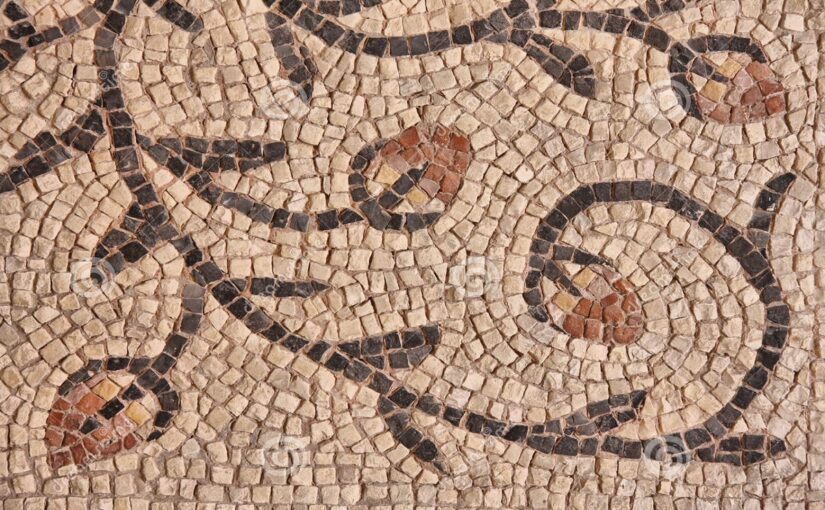31.12.2022
The Calabrian soul has something of Byzantine meticulousness, attention to detail, the ability to see the universe in detail and to represent it.
Just as the famous Byzantine mosaics arise from the extraordinary overall vision that emerges from minute tesserae with no apparent value or shape – so the church and the communities of its origins in Calabria were, for the Orthodox, the mystical body of Christ emerging from multiple lives without apparent value, whose patient and hidden work erected the modern world we live in, as well as the extraordinary charity and solidarity of the Calabrians, almost an appearance of the Christian face (merciful and humble at the same time).
The minute and centuries-old work of the Basilian monks, that is, the Greek religious who fled to Calabria from the lands of Syria and Cappadocia invaded by the Arabs, towards the 7th and 8th centuries, saw many unknown souls devote themselves to cultivating land, to instructing in the Greek language crowds of peasants of the time with the technical and scientific discoveries of the Hellenistic age, copying the Gospels in minute, preciously illuminated manuscripts, assisting the poor, founding the first hospitals, introducing the most capable laymen to the medical profession, bringing the ancient traditions herbal medicines of Alexandria in Egypt, the ancient texts of the Greek philosophers now forgotten in the West, starting the first handicraft industries, treating and beautifying the first city centres.
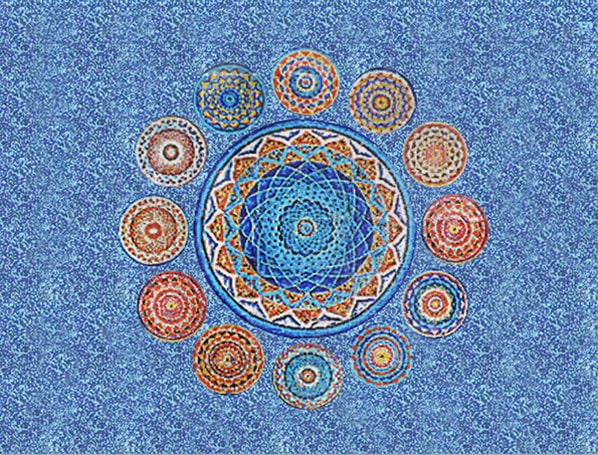
The culture of Constantinople, an empire lasting for a thousand years still after the fall of the western empire, created a second bank in the west in the regions of southern Italy. From the “New Rome“, destined to become Istanbul in 1453, after the Ottoman conquest, a formidable civilization arrived, accustomed to tireless work, to fine theological disputes, to continuous disputes for the distribution and conquest of power.
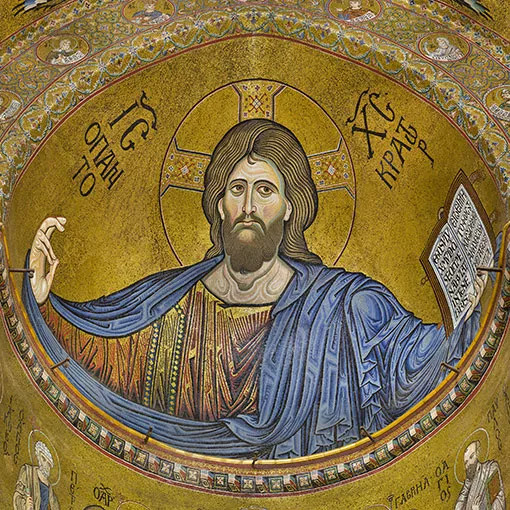
And together with the monks came the proto-democratic culture of working together, of the meticulous efforts through which Hellenistic science had flourished. A triumph of community life which left traces, not only in the architecture devoted to ecclesial meetings, in the beautiful mosaics, in the plans of the Greek cross churches or in sweets and clothing, – but also in the sense of beauty, which, natural and innate, belongs to the ” filoxenia ” of the Calabrians (literally to their “love for the foreigner”, which is expressed in immediate friendship towards the “foreigner”, the guest, the poor, the disadvantaged).

SMAF LTD
Explore our products, coming from CALABRIA. Order the food and beverage products that allow you to explore the Mediterranean diet of a remarkable region. Surrounded by two seas and adorned with pine forests, mysterious villages, natural habitats, and rich biodiversity. Discover handcrafted delicacies that embody the soul of the land: sun-ripened fruits, premium olive oils, bold wines, artisanal cheeses, and traditional cured meats, all crafted with passion and authenticity.
ARCHAEOLOGICAL REDISCOVERY OF THE BYZANTINE PAST OF CALABRIA
Towards the end of the 19th century Paolo Orsi, the archaeologist of Rovereto, appointed by the Kingdom of Italy as superintendent of the archaeological heritage of Sicily and Calabria, left many memories in his volume ” The Basilian Churches of Calabria ” on the beauty of Byzantine culture In Calabria.
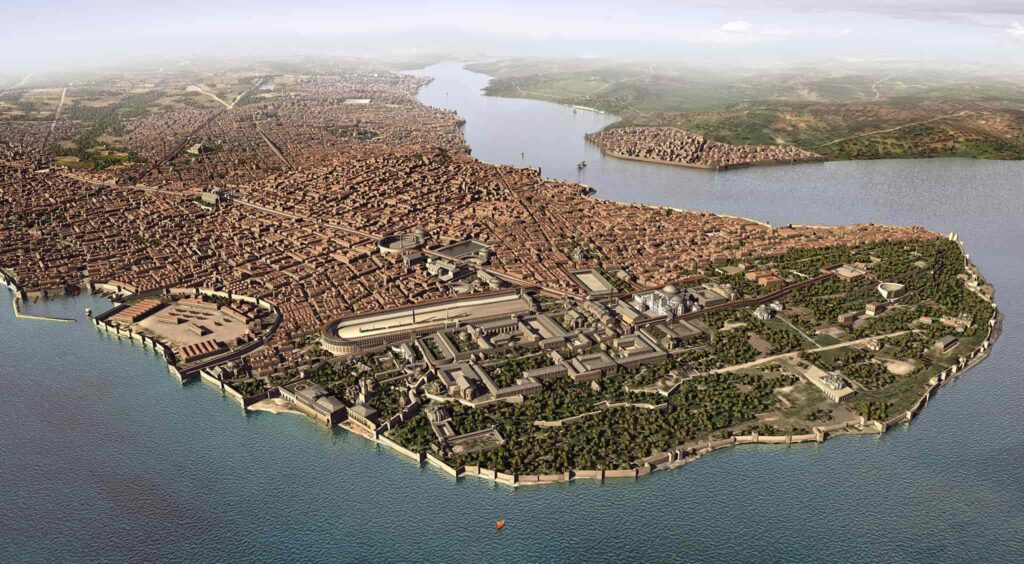
The points of irradiation of Byzantine beauty in Calabria are Reggio Calabria, Stilo and Caulonia.
The famous Byzantine church of Stilo, la Cattolica, is the best example.
Discovering Byzantine Calabria is an itinerary through history, art and nature, a journey to discover the many Greek Orthodox heritages in Calabria, from north to south of the region, a mystical and sensorial path at the same time through one of the three souls of the Mediterranean world (the first is the Greek-Byzantine one, the other two are the Arab and the Latin one, of course).
The history of Byzantine Calabria is that of the civil and cultural sites that carried out the so-called “second Greek colonization“, with significant effects from an architectural, artistic, linguistic, landscape and ethnic point of view in the broadest sense. In fact, the fascinating mixture of Bruzi, Greek, Roman, Arab and Jewish genes takes place in the Calabrian people, as well as the genesis of a unique legacy of magically intertwined traditions, rituals, dialects and customs.
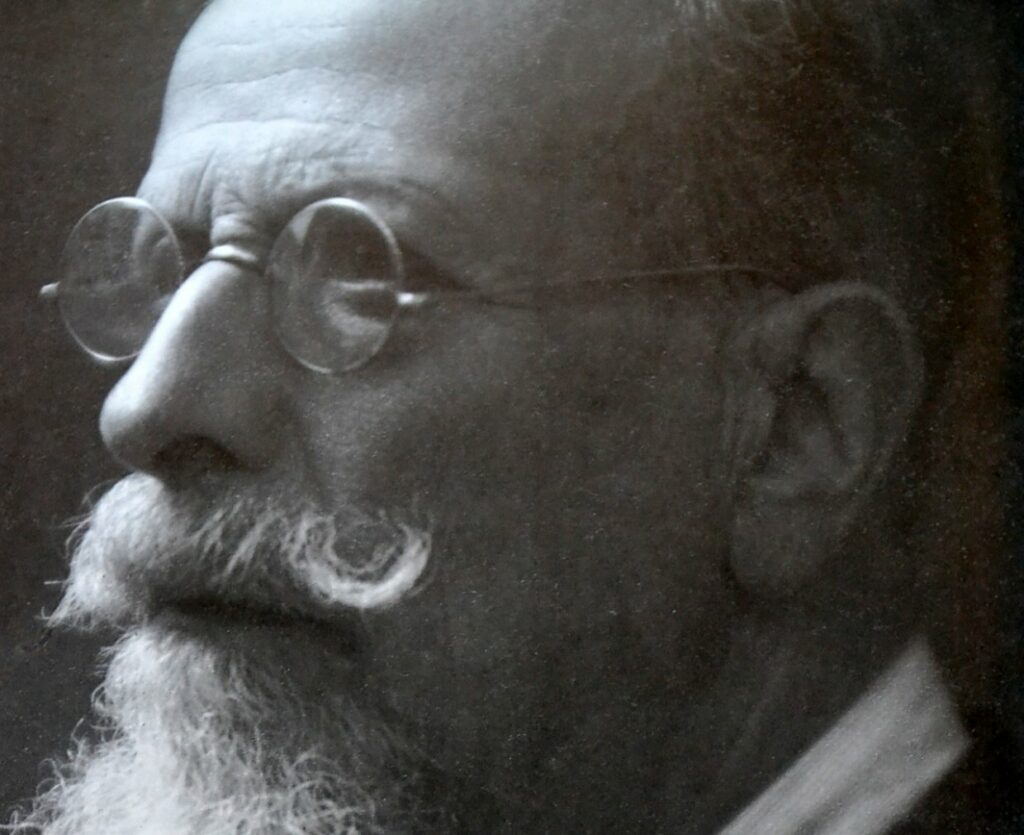
There are three unmissable stops to discover some of the most beautiful Byzantine churches in Calabria and the best preserved monasteries.
The first is Rossano (in the district of Cosenza), with the Abbey of Santa Maria del Patire. Between the greenery of the Sila National Park and the blue of the Ionian Sea, from the 6th to the 11th century Rossano was one of the most strategic Byzantine sites in Calabria for the Greek Orthodox empire.
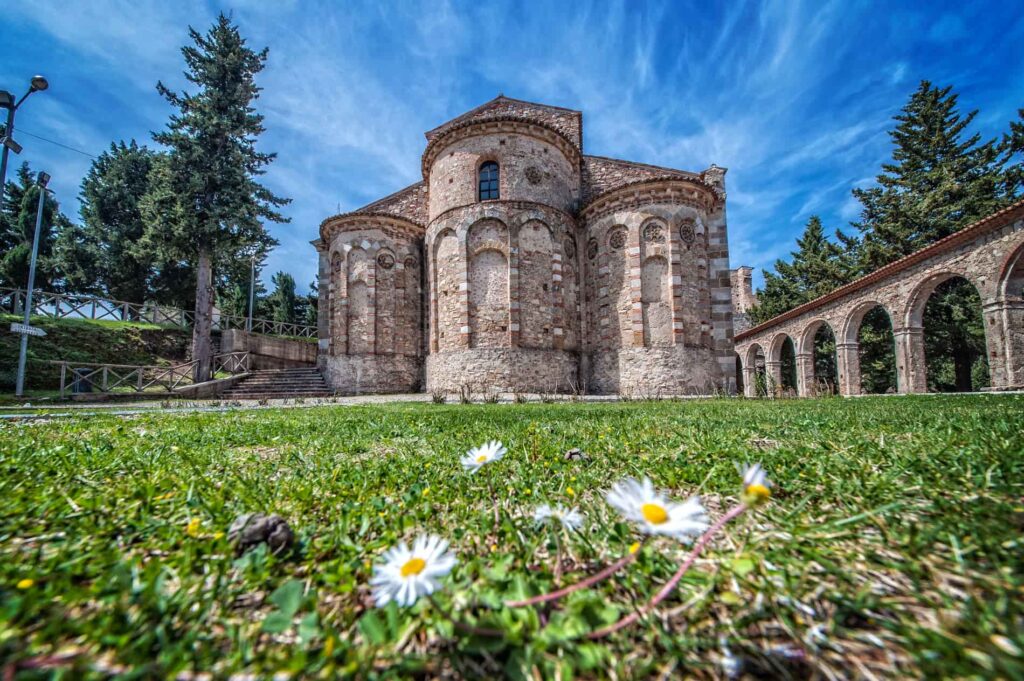
The monk Bartolomeo di Simeri founded it in 1095, then the abbey was among the most important Byzantine monasteries in Calabria.
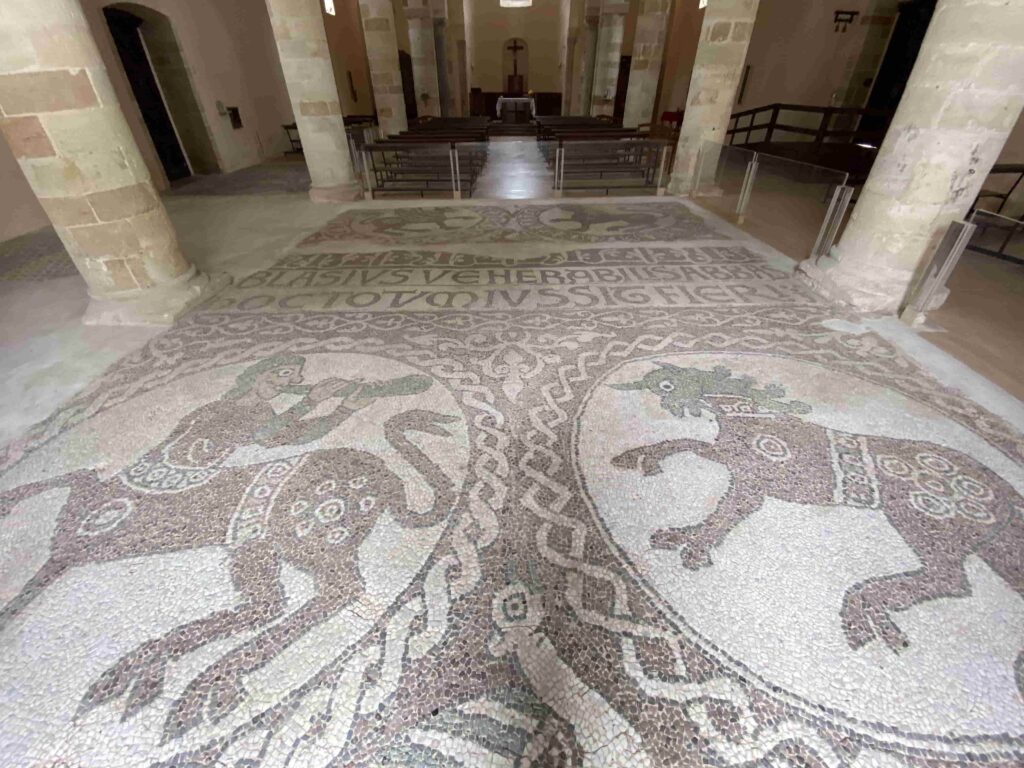
The current church is still enriched by the ancient mosaic carpet on the floor, which depicts real and mythological animals, by the 17th century wooden crucifix and by the effigy of the Madonna del Patire.
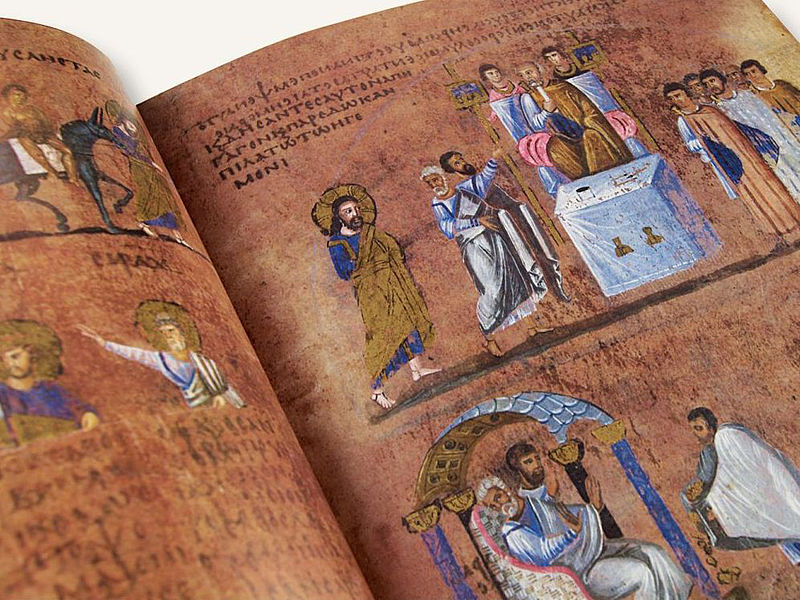
Also in Rossano, one of the most precious Byzantine legacies in Calabria is kept in the Diocesan Museum of a famous Codex: the Codex Purpureus Rossanensis , or the illuminated Greek evangeliary dating back to the 6th century which collects, in 188 sheets of very fine purple parchment, the Gospels of Matthew and Mark, recognized as a UNESCO World Heritage Site. The codex is embellished with 14 miniatures with a particular and rare purple colour, a prerogative of the Byzantine emperors, accompanied by descriptive scrolls that illustrate the most significant moments in the life and preaching of Jesus.
A second important site is in Santa Severina (a pictoresque medieval village, taking part to the small club of “The Most Beautiful Villages of Italy”), in the Crotone area, with its 8th century Baptistery (the only example of a Greek cross Baptistery in Italy). Another Byzantine monument here is the Church of Santa Filomena, also called del Pozzoleo.
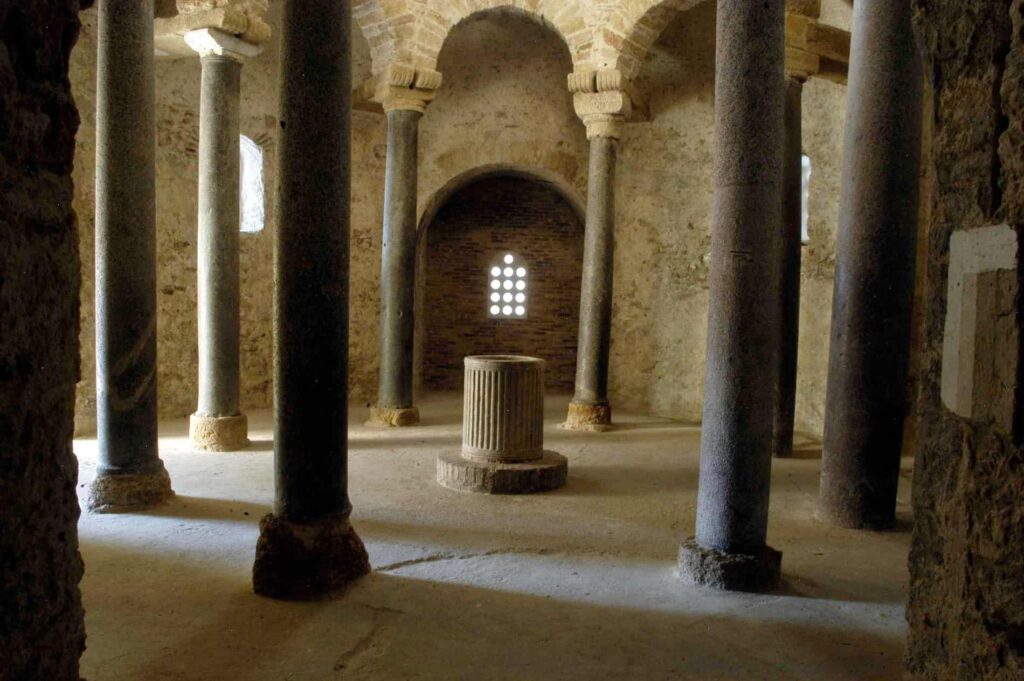
The third stage is a dyad of cities: Stilo and Bivongi. In Stilo there is the beautiful church known as “la Cattolica”, while in Bivongi there is San Giovanni Théristis , a monastery.
The two villages in the Reggio Calabria area host, along the course of the Stilaro river, at the foot of Monte Consolino, on one side the wonders of the Monastery of San Giovanni Théristis (whose style is evident on the outside of the basilica, built in tanning stone and terracotta, and in the interior frescoes), on the other to Stilo, the ideal city of the philosopher Tommaso Campanella, the jewel symbol of Byzantine art and architecture of Calabria which is the Cattolica.
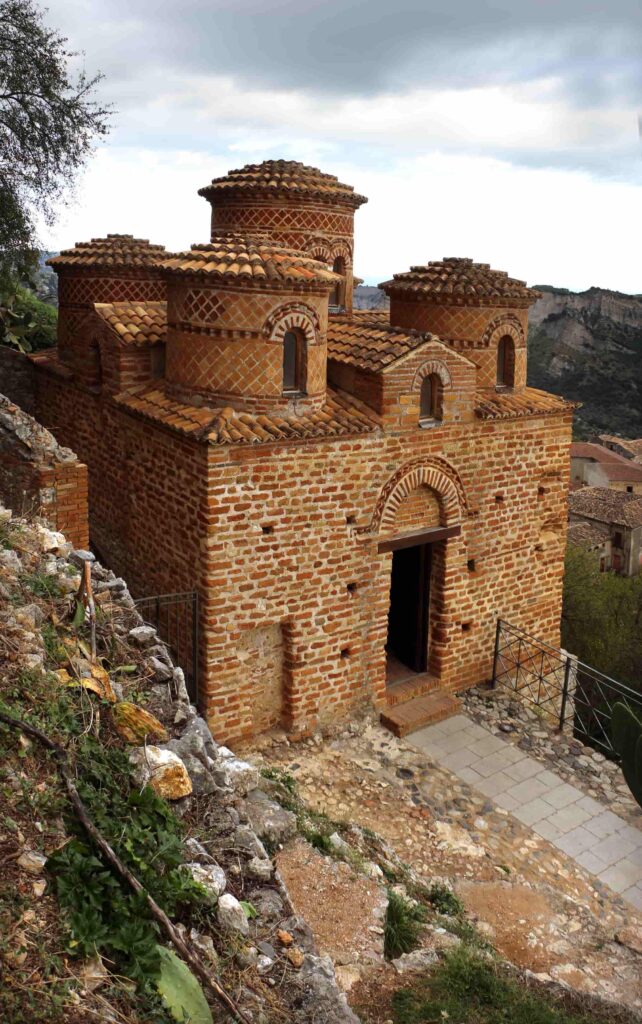
Which presents the typical Greek cross plan directly derived from the archetype of the Church of the Holy Apostles in Constantinople.
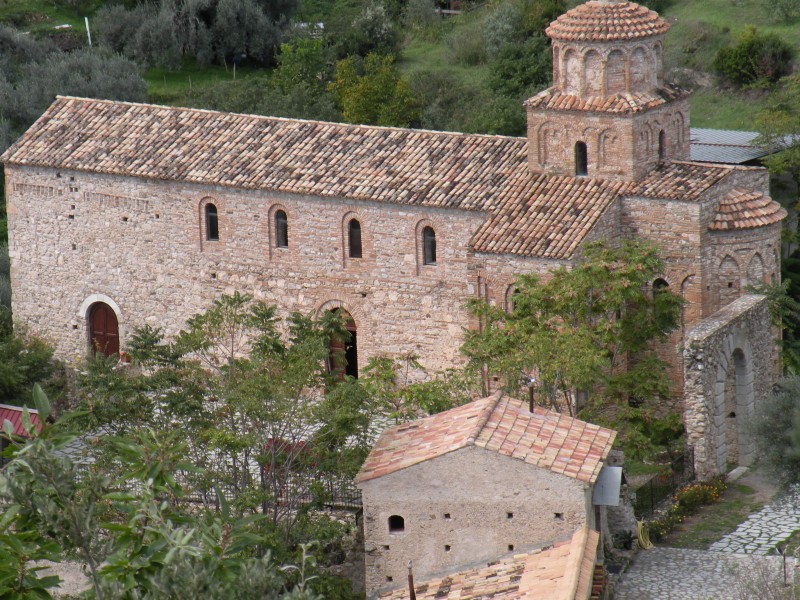
The church dates back to the 10th century and is surmounted by five cylindrical domes, which house frescoes and inscriptions.
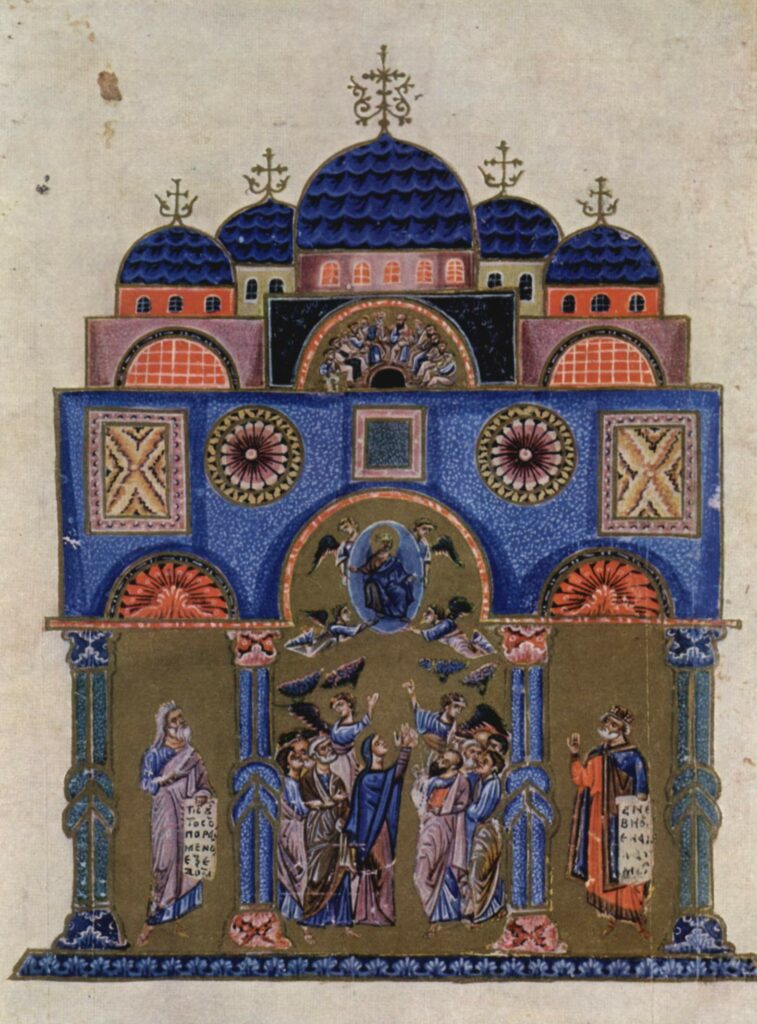
THE BYZANTINES AND THE MONKS OF SAINT BASIL THE GREAT
Vehicles of this new seed of Aegean culture were humble characters, guided by an intense spirituality, who had chosen the path of isolation and penance to feel close to the only God they venerated: they were the Basilian monks.
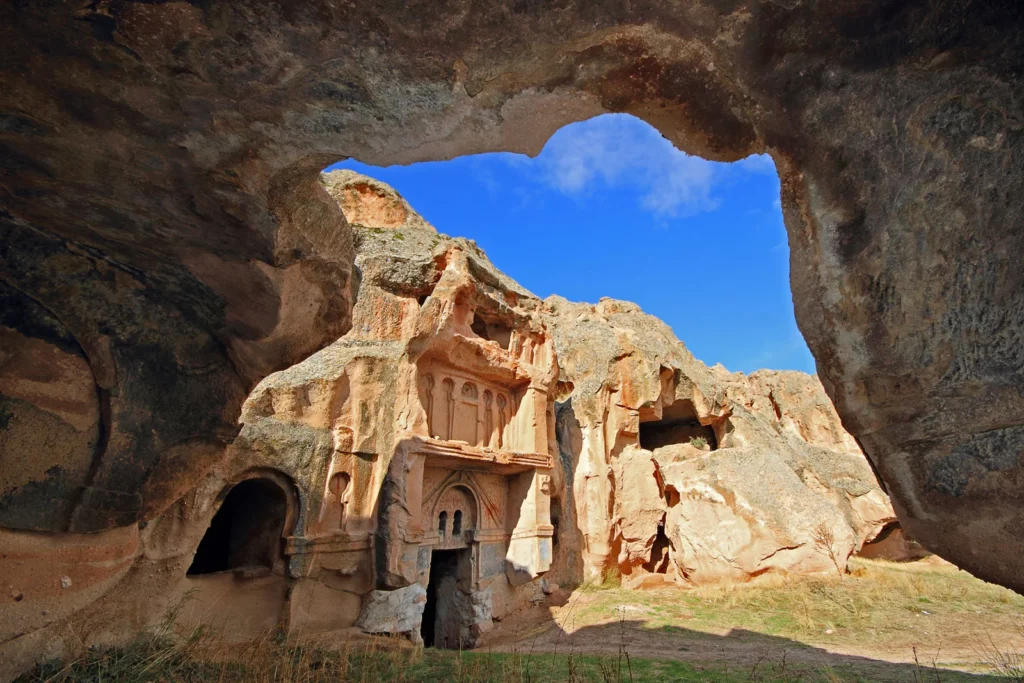
For these mystics (coming from Cappadocia and fleeing under the pression of Islam), who were looking for solitary places far from human temptations, the green dotted deserts of Calabria were the best they could expect after the long wanderings from one coast to the other of the Mediterranean.
The major migrations occurred around the seventh century A.D. In five centuries the region was populated by anchorites and monks in every remote corner of its territory. Hermitages, monasteries, cenobies, but also tiny “Laure” ( Λαύρα in Greek, Ла ́вра in Cyrillic , is a small monastic settlement) arise among steep cliffs and tangled trees. Also the Stilaro Valleys and Allaro the area between the rivers Assi, Stilaro, Allaro, did not remain out of this migration. It was dotted with hermitages and monasteries making up the monastic complex of Stilo.
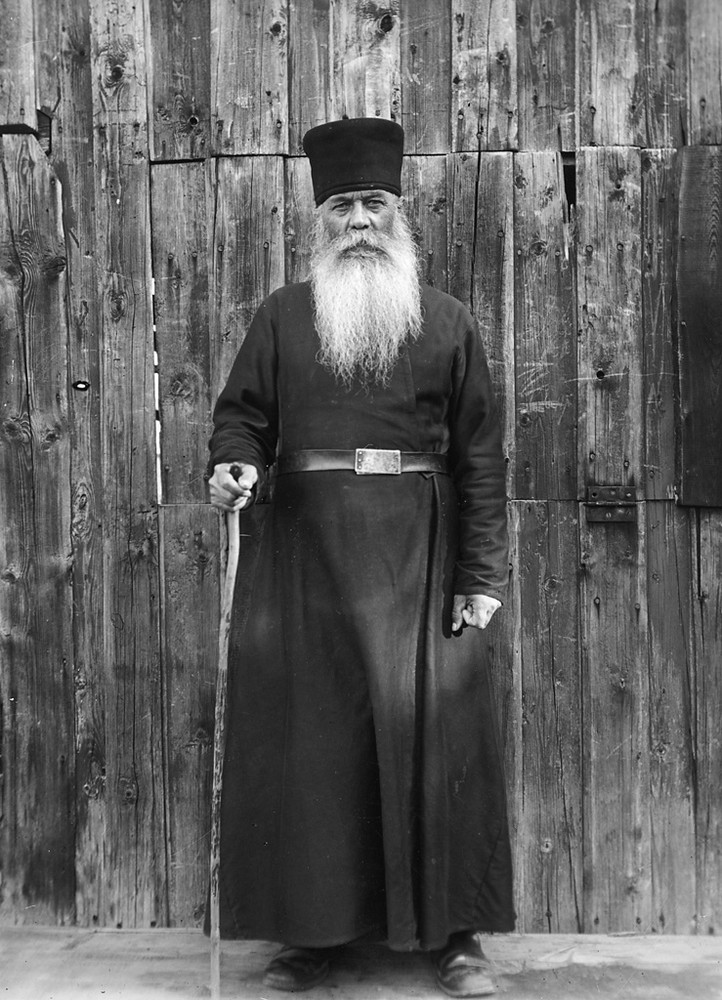
The valleys are located in the province of Reggio Calabria, 15 km from the sea and 15 km from Serre Calabre. It is not only the cradle of Byzantine culture and oriental asceticism, but it is also the inexhaustible wealth of pristine and primitive nature. It is also the cradle of the first southern industrialization (for modern industrial archeology).
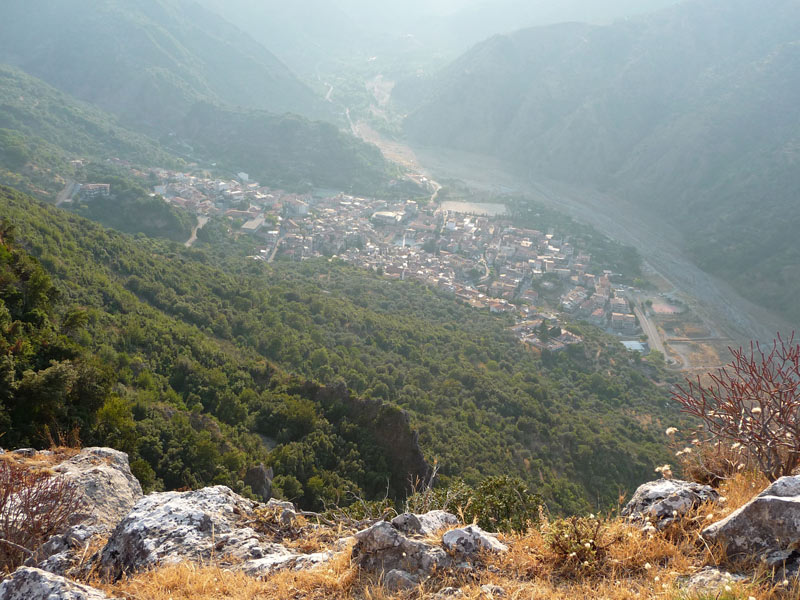
HISTORY OF THE BYZANTINE PENETRATION
In 410 BC Calabria was crossed by the Visigoths whose king Alaric, according to tradition, died near Cosenza and was buried in a tomb dug in the bed of the Busento . Only after the fall of the Western Roman Empire (476), Calabria, together with Southern Italy, fell under Byzantine domination, nominal and in certain periods effective. In fact, after Theodoric, king of the Ostrogoths, imposed his sovereignty in Calabria, upon his death (526), the Byzantines wrested Calabria and therefore all of Italy from his successors (Gothic War, 535/553). The Longobards conquered the northern part of the Region by setting up a Gastald (Lombard political unit) based in Cosenza, within the Duchy of Benevento and then the Principality of Salerno (847). The Arabs, who had already settled in Sicily in the 9th century, however, with their incursions caused considerable damage to Calabria, also reaching the interior and managed to establish an emirate in Amantea (784/884).
The Byzantines, in 885, drove out the Lombards and Arabs, restoring the administrative unity to the region which, in this period, took the name of Calabria (with which the Salento peninsula had been called in the classical age); a strategist was proposed to the <<thema>> (territorial subdivision of a political type) of Calabria. The Byzantine reconquest again impressed Calabria with the signs of Hellenism, thanks also to the religious action of the Basilian monks who, expelled from Sicily by the Arab invaders, managed to convert the derelict local populations and the demoralized Greek refugees from the island into an orderly community by recreating , after about ten centuries, a Greek-type society in southern Italy.
San Nilo di Rossano and his companions emulated the ancient Greek pioneers in spreading their culture in the western Mediterranean, even giving a model to Italian monasticism in the Monastery of Grottaferrata (1004).
However, due to excessive taxation, the Byzantine rule did not represent a happy period for Calabria; agriculture declined and large estates spread; it should be added that malaria, eradicated only in 945, and the continuous incursions of Saracen pirates further distanced the inhabitants from the coast towards the safer localities of the interior.
The rule of the Byzantines lasted over half a millennium, from the Gothic War (535-553) until the advent of the Normans in the 11th century.
BYZANTINE RELICS IN OTHER CALABRIAN PLACES
The other towns that contain the art, history, culture and nature of our “Byzantine Calabria” are Monasterace, Caulonia, Stilo, Pazzano, Riace, Guardavalle, Santa Caterina dello Jonio, Badolato.
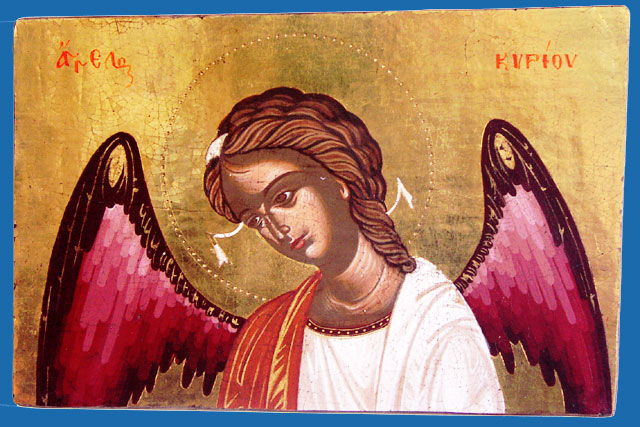
First of all, Caulonia, the ancient Kaulon , a city of Magna Graecia (of Achaean origins actually), which is now part of the present Monasterace.
Reggio Calabria should also be mentioned, which is the oldest city in Greek Calabria. Due to its strategic position in control of the Strait it was an important economic and cultural center under the Byzantine Empire (VI-X century). The Church of the Ottimati in Reggio is a small square-plan structure with three apses and three naves dating back to the 10th century, it was rebuilt in the Arab-Norman style with references to the Byzantine matrix and architectural similarities with the Cattolica of Stilo.
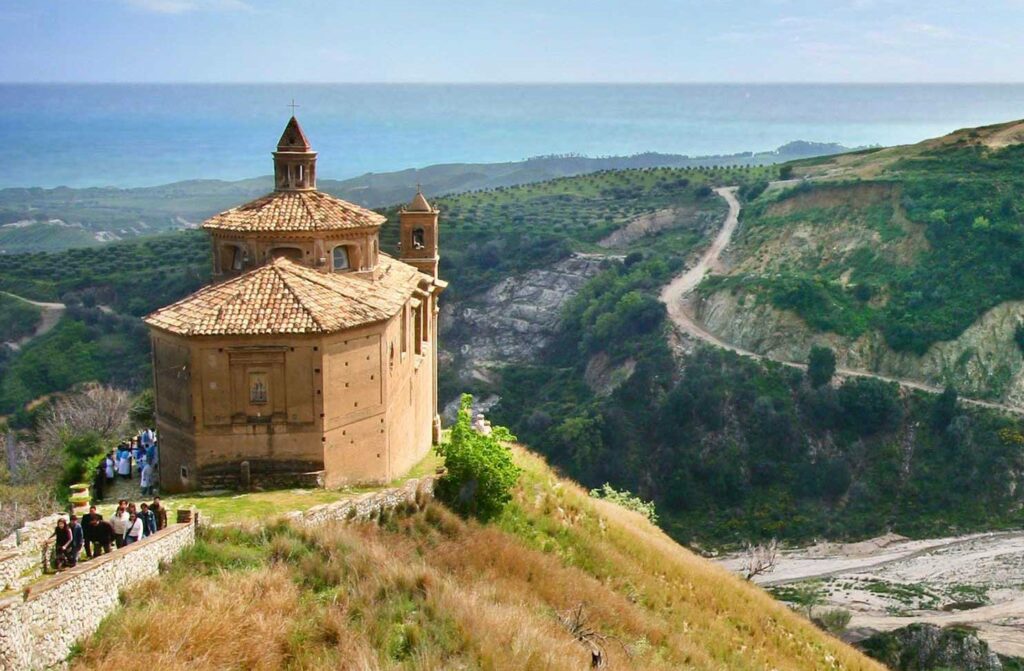
The ancient Byzantine-style floor mosaic was recomposed in the church, an opus tessellatum , which is a floor ornamentation technique which consists in the assembly of small multicolored fragments, made up of marble, stone, glass paste, ceramic or other hard materials.
Also in Reggio, the Castle of Santo Niceto (with a spectacular view of Sicily) is the only example of a Byzantine fortress in southern Italy that has been preserved in good condition. Two square towers are visible near the entrance and at the foot of the short climb that leads to the castle portal there is a small church, equipped with a frescoed dome with a painting of Christ Pantocrator, a typical subject of Byzantine art.
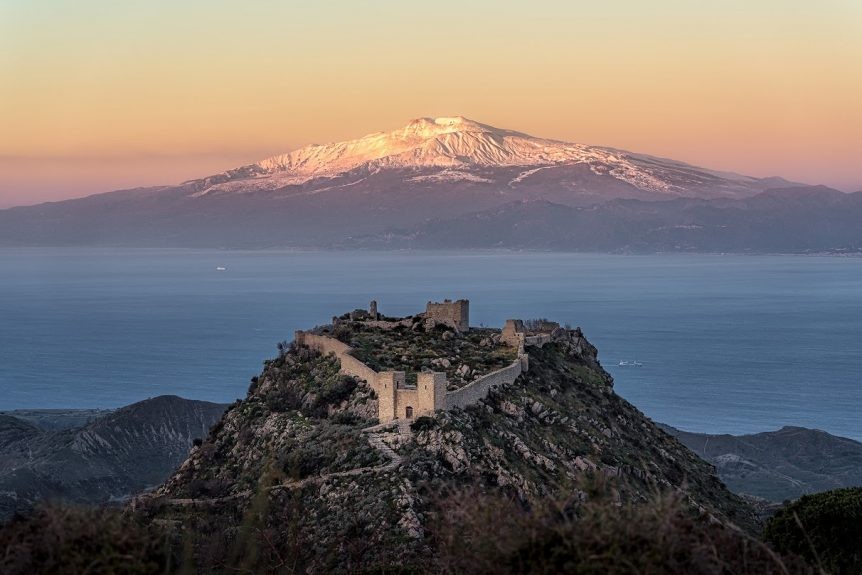
In Paola, mainly known for being the birthplace of San Francesco di Paola, we note the Church of Sotterra, which is an underground church of Byzantine origins built between the 9th and 10th centuries. The most important part of the church is made up of the frescoes of the seventh century. AD, of direct derivation from the Byzantine styles.
On the other hand, San Demetrio Corone, on the eastern slope of the Sila Greca, from which one has a view of the Pollino massif, is among the most important cultural centers of the Albanian communities in Italy and preserves the Albanian language and the Byzantine rite. It presents an Abbey of Sant’Adriano, with a marvelous 12th century floor, formed by zoomorphic motifs and made partly in opus sectile (one of the most refined marble ornamentation techniques) and partly in mosaic. Composed of marble tesserae and local stones, it has an extraordinary polychromatic effect which makes it similar to an oriental carpet.

